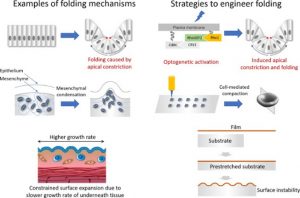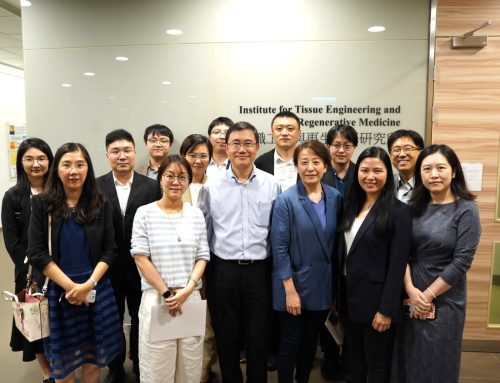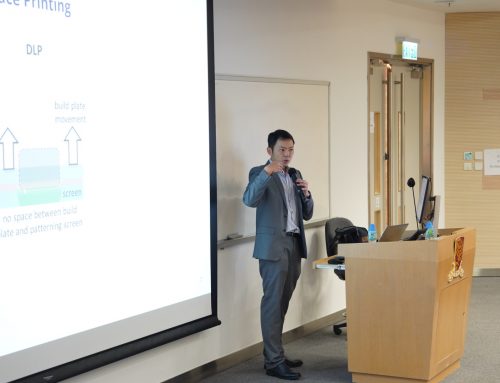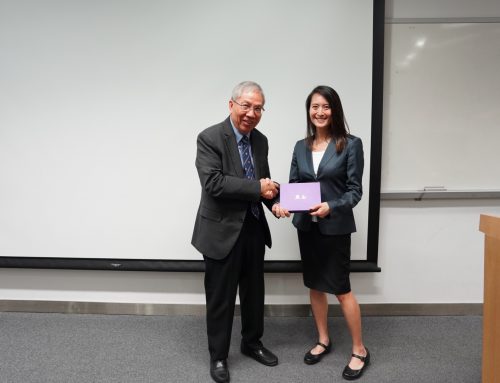This research project is completed under Prof. Hon Fai CHAN. Tissue folding is a common phenomenon in a variety of organisms including human, and has been shown to serve important structural and functional roles. Understanding how folding forms and applying the concept in tissue engineering would advance the development of tissue models and tissue substitutes. Recently, the physical or mechanical aspect of tissue folding has gained increasing attention. In this review, we summarized recent findings on the mechanical aspects of folding and introduce strategies by which folding can be controlled in vitro (https://doi.org/10.1016/j.actbio.2021.07.044). At the cellular level, it has been shown that constriction of the cell membrane drives fold formation in Drosophila. Using an optogenetic approach, the localized activation of Rho1 GTPase can be used to trigger apical constriction and folding. Localized cell clustering in the form of Turing patterns or that induced by contractility-driven cellular pulling can also precede the biochemical signaling that initiates folding. Inspired by this, a 3D cell-patterning approach was developed to recapitulate contractility-driven folding via the contraction of deposited cells on a hydrogel. At the tissue level, instabilities induced by mismatch strain between different tissue layers have been widely reported to drive folding. Various bilayer biomaterial systems can be engineered to recapitulate this phenomenon. Finally, the 3D shape-changes that occur in plants can be reproduced using strategies such as 4D printing and cell-driven curving of scaffold materials. Overall, advances in the development of biomaterials and fabrication technologies will enable the use of engineered folded tissue for biomedical applications to soon become a reality.







Leave A Comment